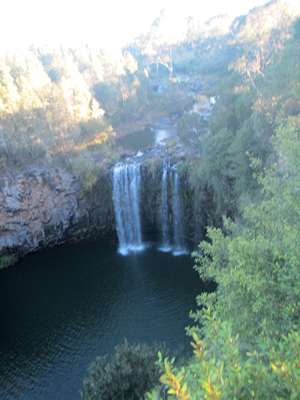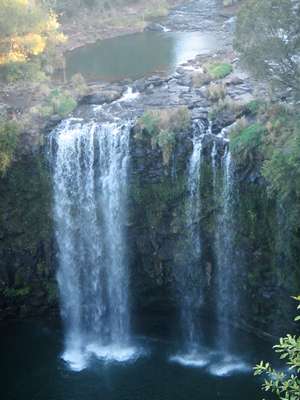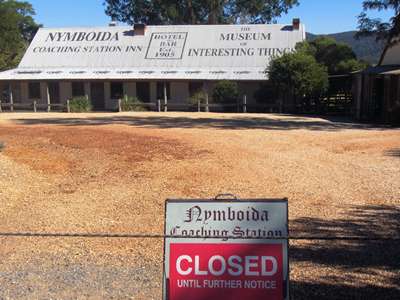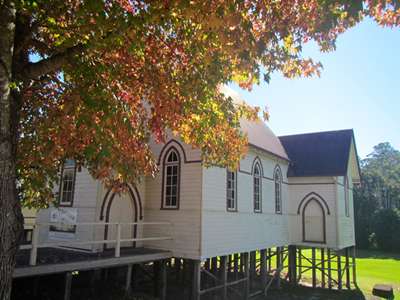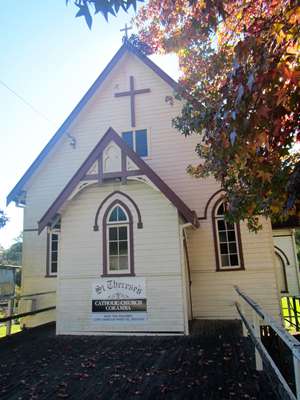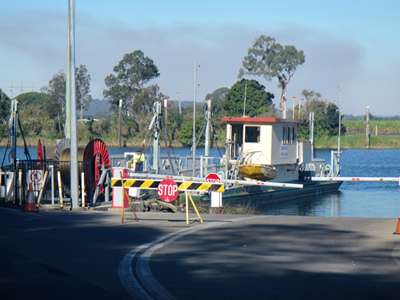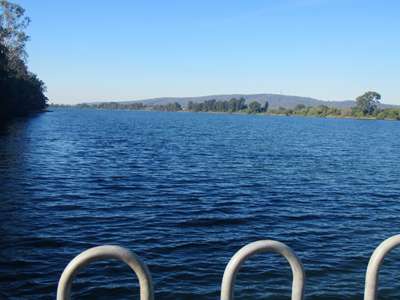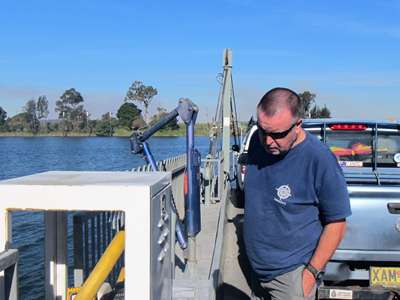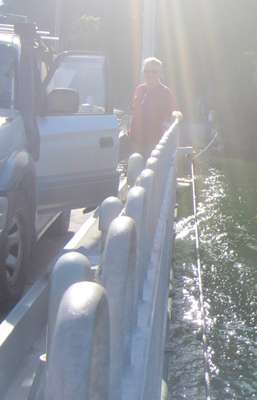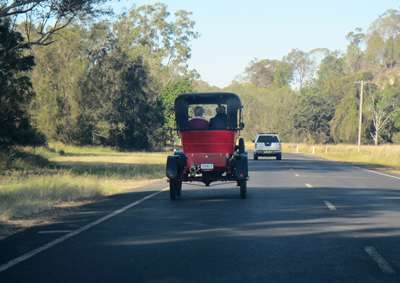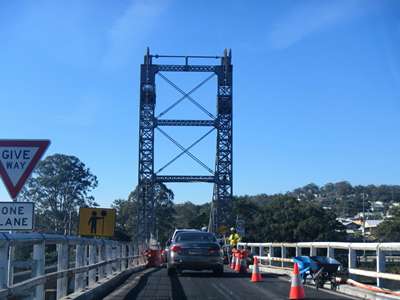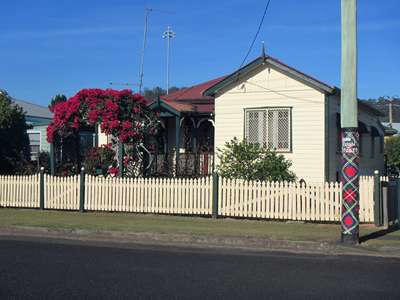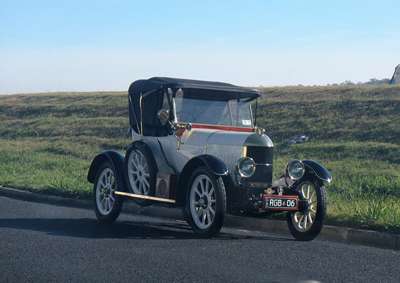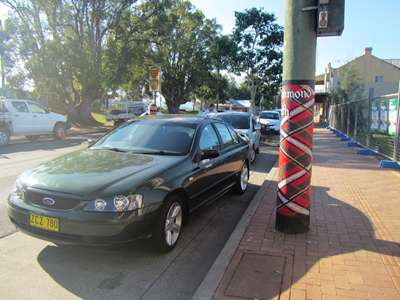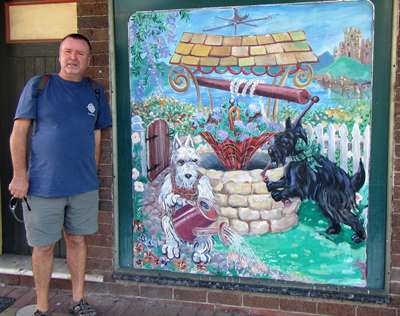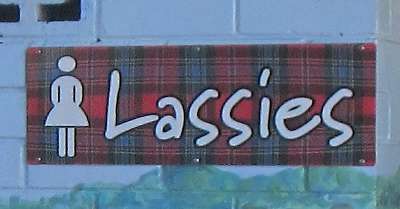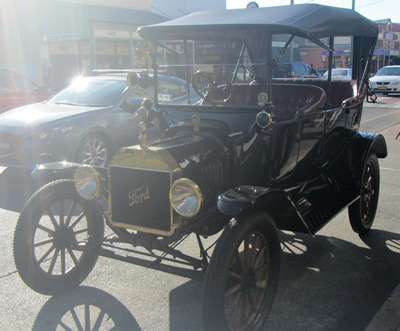Exploring inland from Coffs

|
Thursday 26th May 2016 A rather grey sky this morning, with a few spots of rain
earlier. We currently have Don the electrician on board, attempting to
track down a problem with the shore power system. Otherwise all has been
good here. We hired a car for a few days – a cheapie, $25 a day
from a local second-hand car dealer - it’s been fine so far.
The wiring on the changeover switch – the cause of
our power problems? After a quiet weekend catching up on sleep, tidying the boat
and wandering around the Jetty area of Coffs, we spent Monday collecting the
hire car and doing ‘runaround’ jobs in town. We had to start
a fresh round of doctor’s appointments and tests as Steve’s bladder
infection had returned yet again, with a vengeance this time. He saw the
most offhand, uncaring, unsympathetic doctor we have ever come across anywhere
in our travels, who rather begrudgingly provided a lab request for a urine
test, a referral for an ultrasound and a script for antibiotics. We rather
begrudgingly paid his bill. The rest of the day was spent delivering the
sample to the path lab – it couldn’t be collected in the usual way
as the test had to be paid for - and with Steve having the ultrasound. On Tuesday we went for a drive to Bellingen, a small town 40
km south west of Coffs, on the Bellinger River. There we wandered up the
main street before stopping at one of the coffee shops. The Lonely Planet
describes the town as “hippy without the dippy”, and there were
certainly some rather eccentric looking characters around town. It was
otherwise a fairly typical small town.
The Commercial Emporium, established 1900 – an
early mall? War
memorial – from WW1 to Afghanistan.
Wonder if they have a Rovers Return? Our
cheapo chariot parked outside an ‘alternative’ centre.
Alternative to what? After coffee we drove onward and upward another 30 km to the
Dorrigo Rainforest Centre on Dorrigo Mountain. This turned out to be well
worth the drive. The centre had very informative displays and we stayed a
while to watch a video about the rainforest ecosystem. After a picnic
lunch during which I wished I had brought a fleece with me – it was
certainly cooler up there – we wandered along the skywalk to admire the
view out over the countryside. We could just make out the buildings of
Bellingen, and way beyond that the blue of the sea.
Part of the Giinagay Wall at the Rainforest Centre.
‘Giinagay’ means ‘welcome’ in the language of the
Gumbaynggirr Nation, the traditional owners of the land.
The view out to the coast from Dorrigo Mountain. On
the Skywalk balcony. We checked out the different walks available, and realised
we should have made this a whole day visit, as we now only had time to do a
couple of the short walks. With more time we could have walked to a couple of
waterfalls as well, but we were happy to settle for a walk through the
rainforest.
Tangles of vines were everywhere – some made
interesting shapes and patterns.
A strangler fig, growing from a fork in this tree. Its
roots grow downwards in their quest for food and moisture. They surround the host tree which eventually dies,
leaving a fig tree with a hollow trunk.
Buttress roots. We
saw several brush turkeys who were not bothered at all by our presence. Later we drove into the town of Dorrigo, where we followed a
sign to Dangar Falls. This made up for missing the waterfalls earlier!
Dangar Falls. Yesterday we drove out of Coffs in the opposite direction
and headed north towards Glenreagh. We were actually aiming for a very
small place called Nymboida, 100 km inland, where we planned to visit
“The Museum of Interesting Things” put together by Russell Crowe,
who used to live nearby. We originally read about it in the Lonely
Planet, and had checked it out online to make sure it was still open. The
pub on the same site was listed as permanently closed, but there was no mention
of the museum closing, so off we went. It was a beautiful day and we had
a lovely drive, which was just as well because it was otherwise a fruitless
journey. We found the closed coaching inn, and on the same site the
museum – also closed. Enquiries at the general store confirmed that
it had been closed for some time. How disappointing.
A church on stilts we passed along the way. The
autumn colours were beautiful and reminded us of home. On the upside, it meant we had time to explore a bit
further, so we headed back the way we had come and then turned off towards
Grafton, the main town of the Clarence Valley. As a typical big town, it
held little interest for us, so we did a drive through, just stopping to take a
look at a couple of historical buildings. We were aiming for Maclean, a
small town on the banks of the Clarence River, which takes its Scottish
heritage seriously and paints its lampposts with tartan. So we drove on
along the north bank of the very wide Clarence river until we reached Lawrence,
where we waited for the free cable ferry to collect us and take us to the
opposite bank.
The cable ferry, now empty, awaits reloading. The
wide Clarence River looking downstream towards Yamba.
As usual, Skipper looking to see how it works. The
cable that keeps the ferry on course. On the way in to Maclean we passed a vintage car, and when
we arrived in town we saw several more. There didn’t seem to be a
rally or club meeting, so we just assumed it must be another of the
town’s idiosyncrasies. The town’s claim to be “The
Scottish Town in Australia” is based on two things – a large number
of the early settlers were originally from Scotland, and the town itself was
named after Alexander Grant McLean, a scot who was the New South Wales Surveyor
General when the town was laid out in the early 1860’s. It was a
pleasant little town, but apart from the tartan poles, some painted scenes on
shop windows and walls, and the “Lassies” sign outside the public
loo, it was pretty much like any other Aussie town and unlike any Scottish
towns I have visited. Still, it’s nice that they remember the town’s
history.
On the road into town, we passed this vintage car. Waiting
to cross the bridge into Maclean.
Wide roads with well-kept houses and tartan lampposts. Another
vintage car.
More tartan. Scotties
– our cruising friends’ nickname for us!
Tartan sign for the ladies’ loo. Yet
another vintage car, this one offering rides. At a price. |
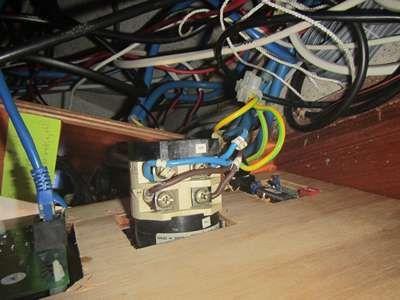
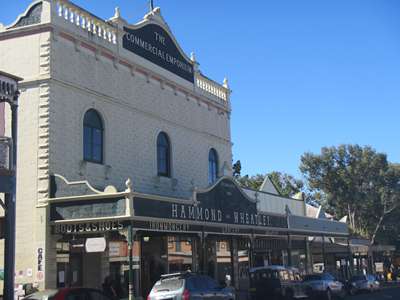
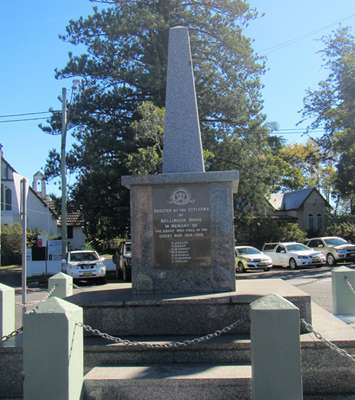
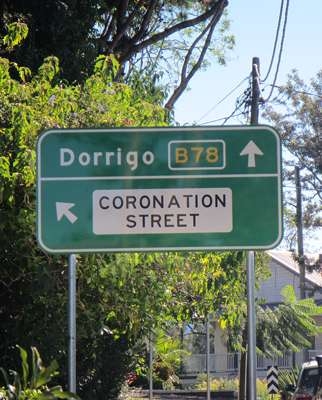
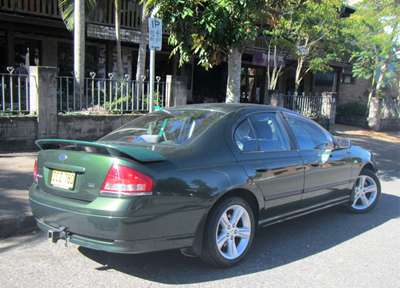
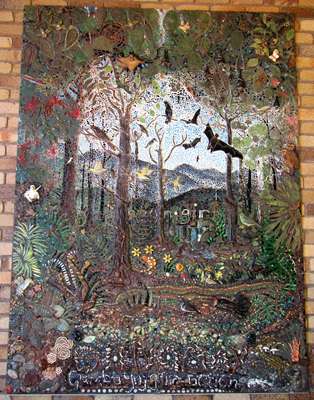
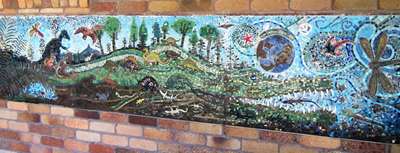
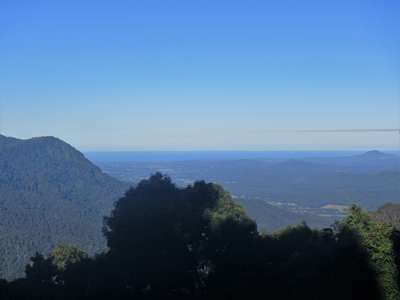
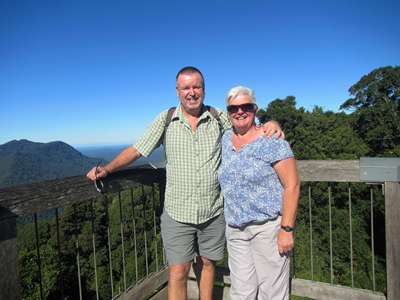
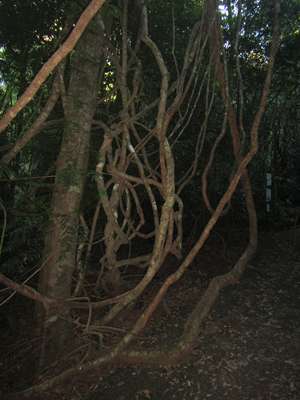
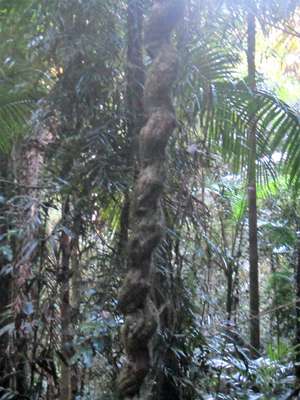
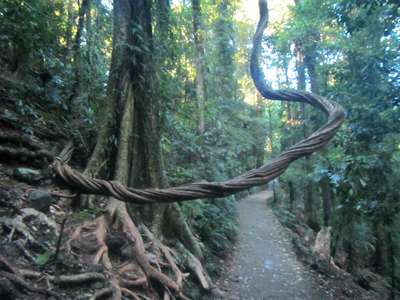
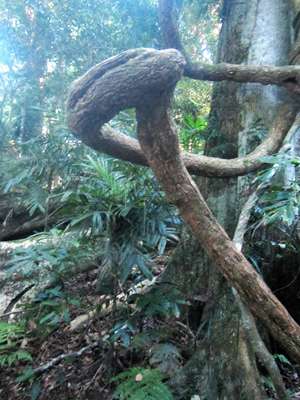
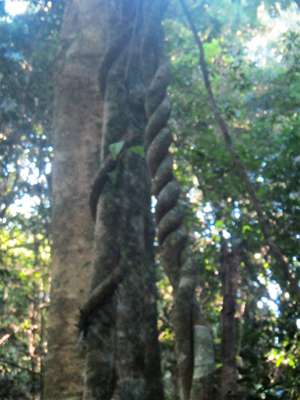
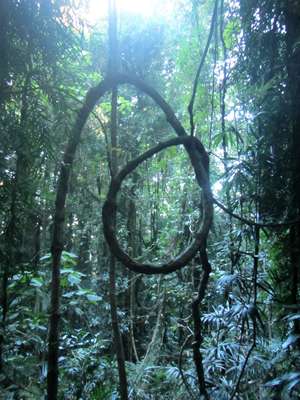
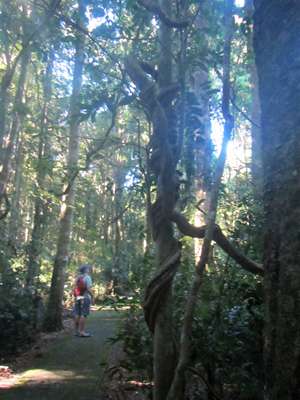
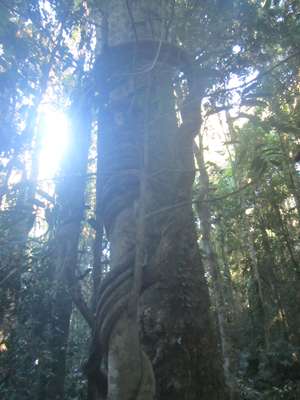
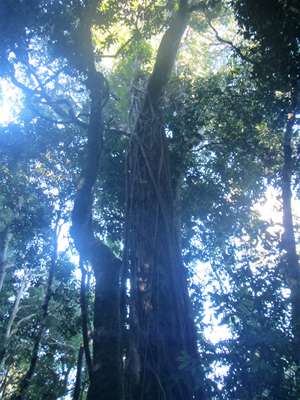
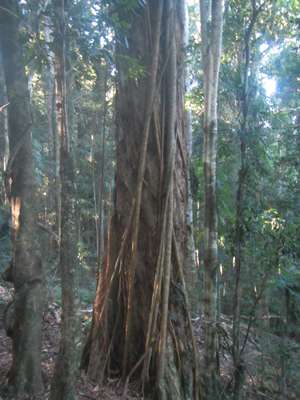
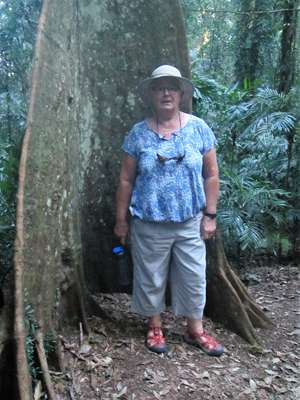
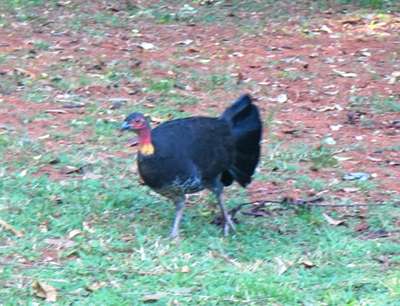 #
#